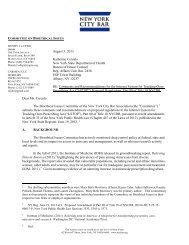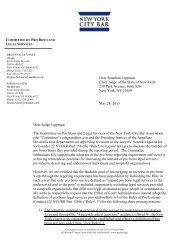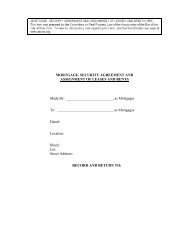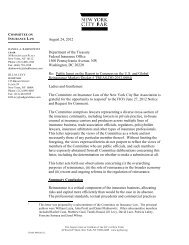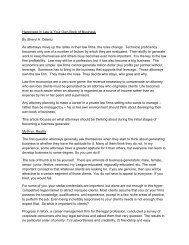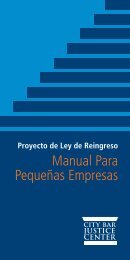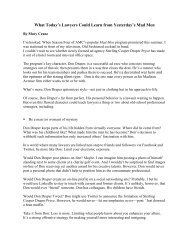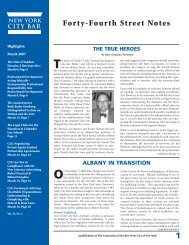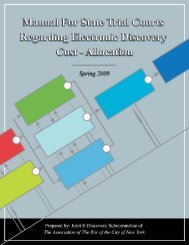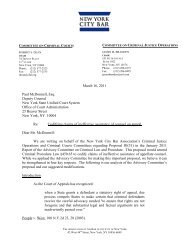2007 Issue 1 - New York City Bar Association
2007 Issue 1 - New York City Bar Association
2007 Issue 1 - New York City Bar Association
You also want an ePaper? Increase the reach of your titles
YUMPU automatically turns print PDFs into web optimized ePapers that Google loves.
P R E V E N T I O N A N D P R O S E C U T I O N O F T E R R O R I S T A C T S<br />
aircraft and requires states to permit the aircraft to land and to take custody<br />
of the perpetrator when necessary.<br />
Many of the acts that fall within the scope of this treaty are<br />
also addressed in more detail in the aviation-related treaties described<br />
below.<br />
(2) 1970 Hague Convention for the Suppression<br />
of Unlawful Seizure of Aircraft 7<br />
This treaty covers the prosecution of individuals accused of committing<br />
hijackings using force, threat of force, or any other form of intimidation.<br />
It also covers accomplices and attempted hijackings. State parties<br />
agree to adopt legislation making these acts punishable by “severe penalties.”<br />
States are required to take measures to establish jurisdiction over<br />
acts committed in their territory and in aircraft registered to them. States<br />
must also take measures to establish jurisdiction over alleged offenders<br />
located in their territory and either prosecute or extradite them.<br />
The Hague Convention improves on the Tokyo Convention by detailing<br />
specific unlawful acts and requiring prosecution or extradition and<br />
the administration of “severe penalties.”<br />
(3) 1971 Montreal Convention for the Suppression of<br />
Unlawful Acts Against the Safety of Civil Aviation 8<br />
This treaty covers violent acts against persons on board that are likely<br />
to endanger flight safety, destruction of the aircraft, damage to the aircraft<br />
that is likely to endanger flight safety, and destruction or damage of<br />
air navigation facilities. It also covers accomplices and attempted acts.<br />
Like the 1970 Hague Convention, the Montreal Convention requires states<br />
to adopt severe penalties against these offenses and to take measures to<br />
exercise jurisdiction over acts committed in their territory and in aircraft<br />
registered to them. States must also take measures to establish jurisdiction<br />
over alleged offenders located in their territory and either prosecute or<br />
extradite them.<br />
The distinction between the Hague and Montreal Conventions is that<br />
the Hague Convention is aimed at acts of hijackings, whereas the Montreal<br />
Convention covers bombings and other violent acts that are likely to<br />
cause an aircraft to crash.<br />
7. Convention for the Suppression of Unlawful Seizure of Aircraft (“Hague Convention”),<br />
Dec. 16, 1970, 22 U.S.T. 1641, 860 U.N.T.S. 105.<br />
8. Convention for the Suppression of Unlawful Acts Against the Safety of Civil Aviation<br />
(“Montreal Convention”), Sept. 23, 1971, 24 U.S.T. 564, 1975 U.N.T.S. 177.<br />
2 0 0 7 V O L. 6 2 , N O. 1<br />
23



